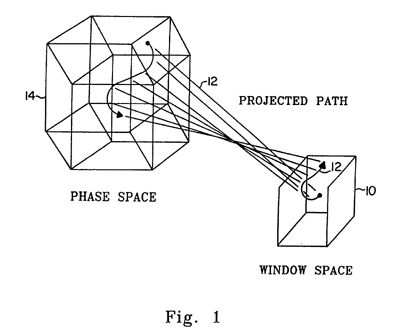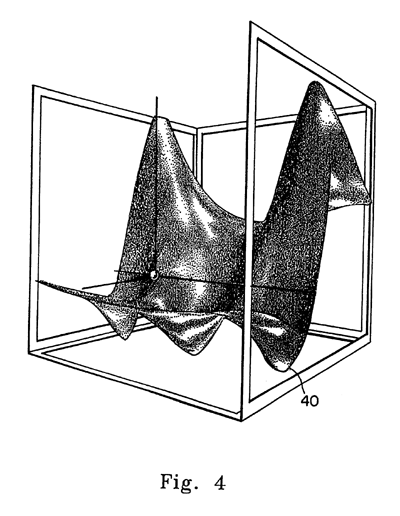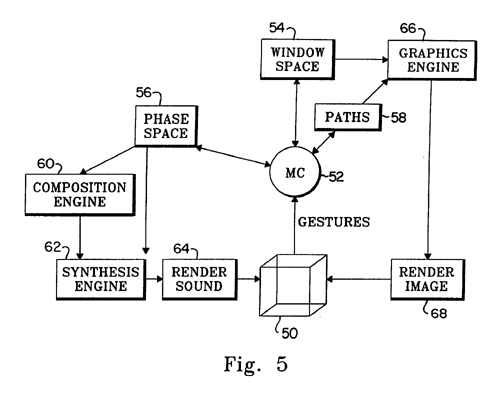A system and method is provided for navigating a manifold in a
high-dimensional space and to interface sound to movement. According to
the system of the invention, an input movement sensor operates to capture
movement of an object in relation to the manifold. The captured movement
is then communicated to generate a control signal in a higher dimensional
phase space. A window space translates information from the phase space to
render a representation of the relation between the location of the object
and the manifold. Sound quality changes are related to movement. Sound
output is via a sound synthesizer which generates sound relating to input
movement. In a preferred embodiment, movement of an object in relation to
a manifold is captured in a three-dimensional virtual reality environment.
In a preferred embodiment the manifold is sound generated. The captured
movement is then communicated in order to generate a higher dimensional
phase space. A window space is also generated for mapping information from
the phase space to render a representation of the relationship between the
location of the object and the manifold. The representation can then be
displayed.
Other References
Insook Choi and R. Bargar, "Interfacing Sound Synthesis to Movement for
Exploring High-Dimensional Systems in a Virtual Environment," Systems,
Man, and Cybernetics, Intelligent Systems for the 21st Century., IEEE
International Conference on, 22-25 O, Oct. 1995.
Robin Bargar, Insook Choi, Sumit Das, and Camille Goudeseune, "Model-based
Interactive Sound for an Immersive Virtual Environment," Proceeding of the
International computer Music Conference, Sep. 1994, pp. 471-474.
Carolina Cruz-Niera, Daniel J. Sandin, Thomas A DeFanti, Robert V. Kenyon,
and John C. Hart, "The Cave Audio Visual Experience Automatic Virtual
Environment," Communications of the ACM, Jun. 1992, vol. 35, No. 6, pp.
65-72, Jun.
Robin Bargar, Bryan Holloway, Xavier Rodet, and Chris Hartman, "Defining
Spectral Surfaces," ICMC Proceedings 1995, pp. 373-376.
|

FIG. 1 shows an example of embedding in a window space.

FIG. 2 provides a bijective map between phase space and window space.

FIG. 3 illustrates a view of a path in a window space.

FIG. 4 illustrates a view of a surface in a window space.

FIG. 5 is a flow chart showing the control flow of the preferred manifold
controller environment.

FIG. 6 shows the vowel sounds created by a path controlling CHANT, a
software-based audio signal generator.





